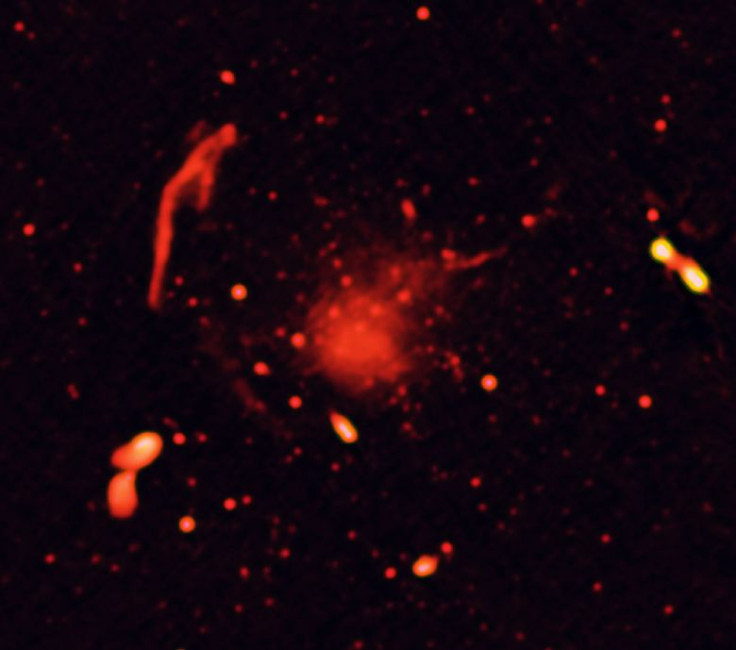What Happens When Galaxy Clusters Collide? A Celestial Fireworks Display

Collisions between large objects in space are remarkable events, producing phenomena like gravitational waves — ripples in space-time that are caused by the merger of two black holes or neutron stars. So when some of the largest objects in the known universe clash together, a fireworks display of truly cosmic proportions would hardly be out of place.
That is precisely what astronomers observed when they looked at a region of space called Abell 2744, located about 4 billion light-years from Earth. In that distant place, several galaxy clusters came together in a giant collision, generating “shock waves that set off a celestial fireworks display,” according to a statement Tuesday by the National Radio Astronomy Observatory (NRAO).
The NRAO also released a composite image of the collision which combines new radio observations made using the National Science Foundation’s Karl G. Jansky Very Large Array (VLA) with earlier X-ray data recorded by NASA’s Chandra X-ray Observatory and a visible light image made using observations from the Subaru telescope and the Very Large Telescope (VLT).
In the image, the radio emissions are seen as red and orange while the purple in the center indicates X-rays produced by extreme heating. As the radio-only image shows, there is a lot of red and orange in the center too.

Galaxy clusters, made up of hundreds or thousands of galaxies, are the largest structures in space. The cores of galaxy clusters are thought to contain large amounts of a mysterious substance called exotic dark matter, and they exhibit phenomena that can lead to completely unknown fundamental physics.
The collision is Abell 2744 is actually more than just two galaxy clusters bumping into each other.
“Astronomers are studying the combined image in an attempt to decipher the sequence of galaxy-cluster collisions. Currently, they said, evidence indicates a North-South (top-bottom in the image) collision of subclusters and an East-West (left-right in the image) collision. There is a possible third collision, and the astronomers continue to analyze their data to uncover more details about the region’s complex history of collisions and their aftermath,” the NRAO statement read.
A large international team of researchers wrote a paper earlier this year on the “complex merger event, with at least four components belonging to different merging subclusters.” Titled “Chandra and JVLA Observations of HST Frontier Fields Cluster MACS J0717.5+3745,” it appeared in the Astrophysical Journal.
The VLA observatory is located in central New Mexico while the VLT — operated by the European Southern Observatory — is located in the Atacama Desert in northern Chile. The National Astronomical Observatory of Japan’ Subaru is at the Mauna Kea Observatory on Hawaii and Chandra is in space.
© Copyright IBTimes 2024. All rights reserved.





















